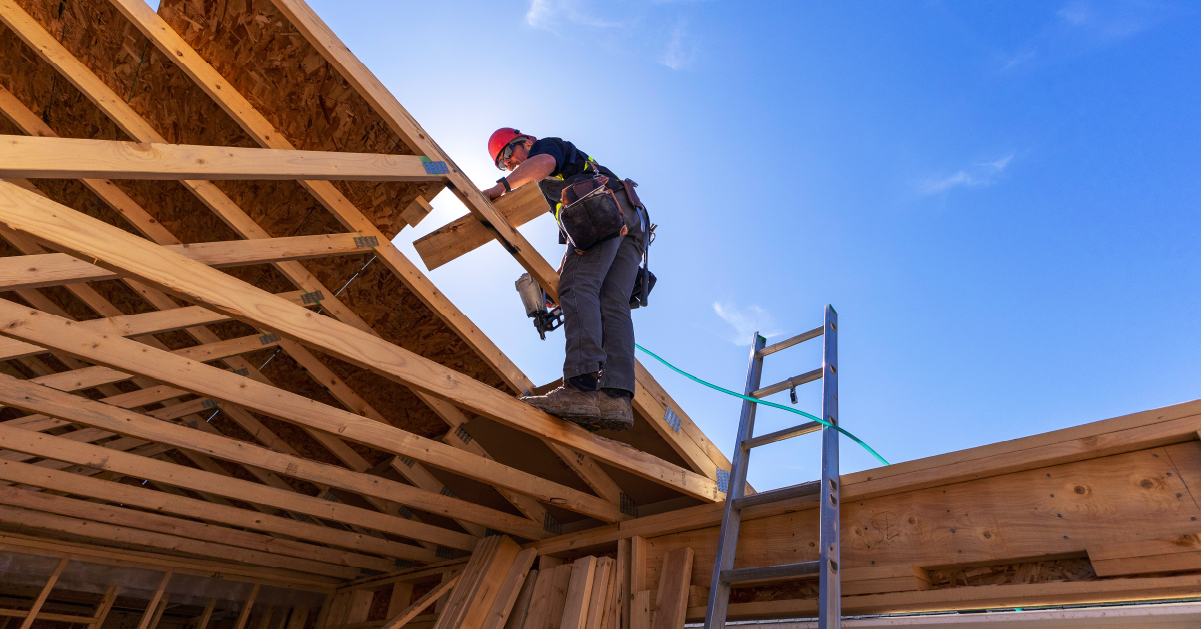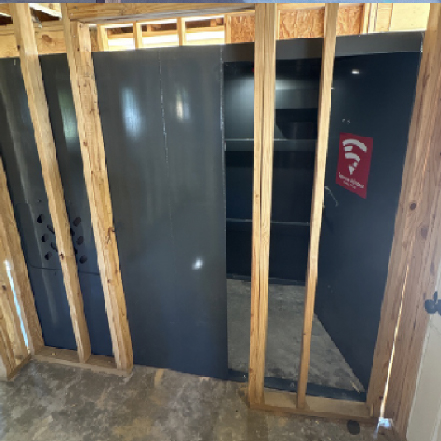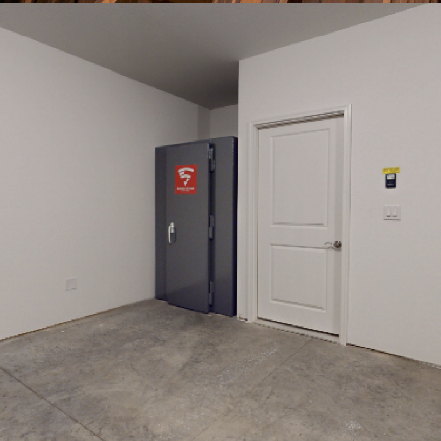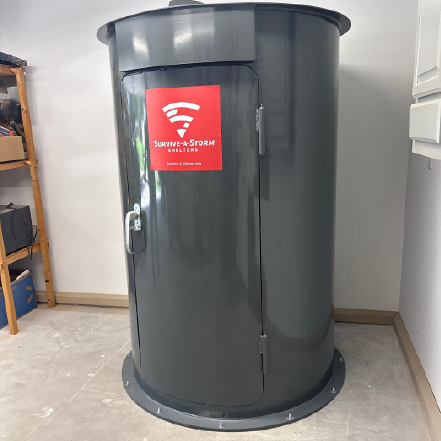CATEGORIES:
Build It Right, Build It Safe: A Homebuilder's Guide to ICC-500 and FEMA P-320 for Tornado Shelters
October 15, 2025

 Why Code Compliance with ICC-500 & FEMA P-320 Isn’t Just a Label, It’s a Homeowner's Lifeline
Why Code Compliance with ICC-500 & FEMA P-320 Isn’t Just a Label, It’s a Homeowner's Lifeline
Tornado shelters built to ICC and FEMA standards are engineered to save lives. These life-safety structures are designed from tested materials, like high-strength steel, to meet or exceed federal best practices in wind and impact performance. The stakes are revealed after real storms. During the 2013 Moore, Oklahoma EF-5 tornado, shelters built to FEMA and ICC standards withstood 200+ mph winds without structural failure. In contrast, some non-compliant shelters experienced problems such as inadequate anchoring or failed doors and hardware. For homebuilders, meeting these standards not only protects occupants but also demonstrates due diligence in code compliance and risk reduction.
Compliance isn’t about bureaucracy; it’s about surviving nature’s worst. When the sirens sound, you don’t want to wonder if your shelter is safe; you want to know it is. FEMA and ICC standards aren’t arbitrary; they are based on data from real disasters and engineering tests designed to replicate the absolute worst-case scenario. These standards address not only wind loads and impact resistance, but also accessibility, ventilation, and emergency egress. A compliant shelter is your last line of defense, and when designed correctly, it performs without fail. Both individuals and families rely on this information to make informed plans for protection before severe weather events occur.
What Is ICC-500, FEMA P-320 And FEMA P-361? (And Why They’re Not the Same)
You’ll often see ICC-500 mentioned alongside these two FEMA guidelines, but it’s important to know what applies to you.
ICC-500
This is a building code standard developed by the International Code Council and the National Storm Shelter Association NSSA. It establishes the minimum design, construction, and performance requirements for all types of storm shelters—residential, community, and commercial. The ICC publishes these standards as official publications in coordination with the U.S. government and professional emergency management organizations, providing resources for builders and engineers in English and other languages.
FEMA P-320
This is the guideline specifically written for homeowners. It provides detailed design and installation recommendations for residential safe rooms that protect against tornadoes and hurricanes. Following FEMA P-320 helps ensure your shelter meets the highest life-safety standards while complying with local codes. FEMA’s Safe Room Resources page and official publications like P-320 offer detailed information for both homeowners and builders, including drawings, components, and materials lists.
FEMA P-361
By contrast, this FEMA guideline is geared toward community and commercial shelters—like those in schools, offices, or public buildings. It adds extensive requirements for large-capacity use, documentation, and structural performance. FEMA P-361 is also the baseline used for eligibility under FEMA-funded grant programs for public or shared safe rooms.
Knowing the difference helps you make an informed choice:
- Homeowners should look for shelters that meet or exceed ICC-500 and FEMA P-320 guidelines.
- Communities, schools, and businesses need solutions that align with FEMA P-361.
- Homebuilders should ensure that shelters offered in new construction meet or exceed ICC-500 and FEMA P-320 guidance, both to protect buyers and to avoid costly compliance issues later.
For the purposes of this blog post, we will focus on ICC-500 and FEMA P-320.
Feature | ICC-500 | FEMA P-320 |
Scope | Building code standard for shelters | Guidance for tornado/hurricane safe rooms |
Wind Resistance | 250 mph (EF-5) | 250 mph (EF-5) |
Debris Impact | must withstand a 15-lb 2x4 at 100 mph | must withstand a 15-lb 2x4 at 100 mph |
Grants | May be required by local code; forms the basis for design standards | Often used as the reference standard for state-administered FEMA grant programs for homeowners |
Accessibility | ADA compliance applies to community shelters; not always required for private residential | Recommends (does not require) accessibility features; includes emergency egress for first responders |
✅ FAQ: Do I need both ICC-500 and FEMA P-320 compliance?
For homebuilders and homeowners, yes. ICC-500 is the building code standard, and FEMA P-320 provides design guidance for residential safe rooms. Together, they ensure your shelter is built to withstand EF-5 tornadoes. If you want your shelter to qualify for certain state rebate or grant programs, it must be designed in line with both ICC-500 and FEMA P-320.
The Core Requirements: What an ICC-500 & FEMA P-320 Shelter Must Have
FEMA-compliant shelters must meet specific criteria to ensure they function under the most extreme conditions. It can mean the difference between life and death. These aren't recommendations; they're life-safety benchmarks based on real-world storm performance and lab testing. These design details reflect decades of accumulated knowledge from FEMA, NSSA, and engineering researchers who analyze storm-damaged structures to refine best practices. FEMA P-320 (2021) lays out the key safety features for safe rooms in homes and small businesses.
 Here's what homeowners should demand and what homebuilders should incorporate in all residential tornado shelters built to FEMA 320 and ICC standards:
Here's what homeowners should demand and what homebuilders should incorporate in all residential tornado shelters built to FEMA 320 and ICC standards:
- Wind resistance: Designed and third-party tested to withstand 250 mph winds (EF-5 level) per FEMA P‑320 and ICC‑500 standards. (Survive-A-Storm Shelters are test by the Texas Tech Wind Institute.)
- Debris impact protection: Walls and doors must resist a 15-lb 2×4 “missile” launched at 100 mph.
- Anchoring system: Must be securely anchored to a reinforced concrete foundation with a continuous load path, verified by engineering.
- Access opening: Doorway must provide a minimum 24" × 30" clear opening for entry and potential rescue access. ADA compliance is recommended, but not required.
- Ventilation: Natural or mechanical ventilation must be provided, with at least two vents that do not compromise structural integrity. Some builders use a rule of thumb of 4 square inches of vent opening per occupant.
- Emergency egress: Must allow exterior access by first responders.
- Flood protection: Shelter should be installed outside known flood zones or elevated or waterproofed if installed underground.
- Design documentation: Must include third-party testing reports or sealed engineering drawings verifying compliance with FEMA P‑320 and ICC‑500, including details on materials, components, and structure size.
- Doors and hardware: Doors must pass FEMA/ICC impact and pressure testing. The standards do not require multi-point locks, but this is a best practice for added strength.
✅ FAQ: How do I verify tornado shelter compliance?
A. Ask your shelter provider for documentation showing that the design was tested to ICC-500 standards and built in accordance with FEMA P-320 guidelines. Look for third-party test reports from accredited labs (such as Texas Tech’s Wind Science & Engineering Research Center) or sealed engineering drawings. Keep in mind that FEMA does not “certify” shelters—verification comes from testing, engineering, and compliance with published standards.
Common Tornado Shelter Compliance Mistakes (That Could Cost You in a Crisis)
Even well-intentioned builders and homeowners make costly errors when they don’t fully understand FEMA and ICC standards. Builders, in particular, can face liability if these errors occur in new home construction. Some builders omit key portions of these standards or substitute non-rated products, which can compromise the entire structure during severe weather. Some of these mistakes may seem minor, but under EF-4 or EF-5 conditions, they could mean the difference between life and death.
Here are the top 7 compliance failures to avoid:
- Using non-rated doors or hinges—rusted or weak hardware fails under pressure.
- Anchoring to weak or unreinforced foundations like thin garage slabs, not designed for shelter loads.
- Ignoring flood risk when placing underground shelters.
- Omitting ventilation—risking overheating or suffocation.
- Attempting DIY installs without professional engineering oversight.
- Believing marketing claims like “FEMA-tested,” “certified,” or “FEMA-approved.” FEMA does not certify shelters—proof must come from testing and engineering documentation.
- Overcrowding the space—tornado shelters should provide at least 5 sq. ft. per person. (More for hurricane shelters.)
Avoiding these pitfalls starts with education and continues with builder accountability. Demand documentation, review test data, and ask hard questions.
Who Builds It Right? How to Vet a Tornado Shelter Provider Against ICC-500 and FEMA P-320 Standards
Choosing the right shelter is only half the equation—the other half is trusting the people who install it. For homeowners, that means selecting a qualified provider. For homebuilders, it means partnering with manufacturers who can prove compliance through documentation and testing. Many manufacturers use terms like “FEMA-rated” or “FEMA-tested,” but that doesn’t guarantee the shelter design complies with FEMA or ICC standards. Choose a company that offers a variety of tested products backed by transparent certification records and clear compliance with official FEMA or ICC sources.
Use this checklist to vet your provider:
- Can you provide documentation showing your shelters meet ICC-500 and FEMA P-320 standards?
- Can you provide third-party test reports from an accredited lab?
- Do you use anchoring systems that comply with FEMA recommendations?
- How do you address flood risk in underground installs?
- What warranty do you offer on construction and performance?
- Do certified professionals complete installations?
- Can I visit past installations or contact references?
- How is ventilation and emergency egress managed?
- Are you a member of the NSSA (National Storm Shelter Association) and listed on their website? Look for the NSSA logo!
✅ FAQ: Can a tornado shelter be FEMA certified?
No. FEMA does not certify, test, or approve tornado shelters. Instead, FEMA publishes design guidance, like FEMA P-320 for residential safe rooms and FEMA P-361 for community safe rooms. Those guidelines work hand-in-hand with the ICC-500 building standard.
Do ICC-500 & FEMA P-320 Shelters Increase Home Value or Insurance Benefits?
Beyond safety, compliance can boost the value of a home and lower long-term costs. Appraisers in tornado-prone areas recognize the value of ICC-500 and FEMA P-320 compliant shelters, often adding 3–5% to the property’s resale value. Additionally, many insurance companies offer premium discounts of up to 20% for homes equipped with compliant shelters. For homebuilders, offering ICC-500 and FEMA P-320 shelters in new construction can serve as both a selling point and a demonstration of commitment to safety.
Investing in code compliance isn’t just about doing the right thing. It’s about future-proofing a property and providing a powerful selling point in an increasingly storm-conscious housing market.
Funding & Grants for ICC-500 & FEMA P-320 Tornado Shelters
High-quality tornado shelters aren’t cheap, but there are programs to help. Whether you're a homeowner in a high-risk area or rebuilding after a disaster, you may be eligible for partial reimbursement through federal and state programs.
Examples of homeowner programs:
- FEMA Hazard Mitigation Grant Program (HMGP): Administered at the state level. Homeowners may qualify for reimbursement if their shelter design follows FEMA P-320 and ICC-500.
- Oklahoma Shelter Rebate Program: Provides rebates of $2,000–$3,000 for qualifying state residents.
- Texas Safe Room Program: Offers 50% cost reimbursement in approved counties.
- SBA Disaster Loans: May include up to 20% additional funds for installing a safe room during post-disaster rebuilding.
These resources are managed by state emergency management offices under FEMA’s official guidance and may reference ICC-500 or FEMA P-320 publications when reviewing eligibility.
✅ FAQ: Does FEMA pay for storm shelters?
FEMA itself does not pay homeowners directly. However, funding may be available through state-managed programs that use FEMA’s HMGP dollars. To qualify, your shelter must be designed in line with FEMA P-320 and ICC-500.
Final Checklist in Building ICC-500 & FEMA P-320 Compliant Tornado Shelters
Whether you’re a homeowner planning an install or a builder adding safe rooms to new construction, ask the right questions and demanding real proof, not marketing fluff. Before you build, use this checklist:
☐ Confirm ICC-500/FEMA P-320 compliance.
☐ Verify wind and impact testing (ask for lab reports).
☐ Choose the right location based on flood risk and access.
☐ Ensure the shelter provides adequate entry/egress openings and ventilation.
☐ Vet your installer for NSSA membership and experience.
☐ Explore funding options or rebate options early to reduce costs.
☐ Create a maintenance and drill plan once installed.
By following these steps and best practices, you're not just protecting your family—you’re making a responsible, future-ready investment in your home and peace of mind. Both builders and homeowners can ensure every person who relies on the shelter—whether individuals or families—has protection that meets the highest certification and product standards.







